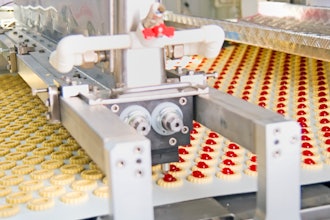
In food and beverage manufacturing, the concept of continuous improvement serves as a guiding principle, driving companies towards greater efficiencies, enhanced quality, and increased customer satisfaction.
In contrast to industries that keep their products relatively unchanged, the food and beverage sector is always evolving to keep up with consumer preferences, meet regulatory standards, and integrate technology to increase efficiency, accuracy, and safety in production lines — while reducing costs. Yet, achieving excellence requires more than just making small, incremental adjustments. It requires a fundamental change in organizational culture, where continuous improvement is embraced as an ongoing journey rather than a fixed destination.
Cultivating a Continuous Improvement Mindset
The journey towards cultivating a continuous improvement culture begins with a mindset shift. This shift involves moving away from a static, "if it isn't broken, don't fix it" mentality to a dynamic, forward-thinking attitude that seeks out opportunities for improvement at every turn. It requires the commitment of every individual within the organization, from top management to the production floor workers, each playing a key role in fostering this culture.
A continuous improvement mindset is characterized by an unwavering focus on customer satisfaction, an openness to change, and a commitment to learning. It views mistakes and setbacks not as failures but as valuable learning opportunities. This perspective encourages innovation and experimentation, essential components of continuous improvement. To cultivate this mindset across an organization, several action items can be implemented:
- Leadership Commitment: Senior leaders must demonstrate their support for continuous improvement efforts, setting an example for the rest of the organization.
- Training and Education: Providing training sessions and workshops can help educate employees on the principles of continuous improvement, equipping them with the necessary tools and knowledge.
- Encourage Open Communication: Establish channels that promote open dialogue, allowing employees to share ideas and feedback freely. Creating a culture where every contribution is valued is key.
- Reward and Recognition Programs: Recognizing and rewarding contributions to continuous improvement can motivate employees and reinforce the importance of this culture.
- Customer Feedback Loops: Use customer feedback as a driving force for continuous improvement efforts, identifying areas that require enhancement.
- Visual Management Tools: Use visual tools such as performance boards, progress tracking charts, or KPI Management Software to keep continuous improvement efforts visible and top of mind for everyone.
- Set Small, Achievable Goals: Start with manageable goals to build confidence and momentum towards larger changes.
- Continuous Learning Opportunities: Offer resources for employees to learn new skills and knowledge that contribute to continuous improvement, such as online courses and workshops.
- Performance Improvement Teams: Form teams tasked with identifying and implementing improvements. These should include members from various departments to incorporate diverse perspectives.
Adopting these strategies can significantly help in fostering a culture where continuous improvement is deeply integrated into the fabric of the organization, leading to enhanced efficiency, innovation, and customer satisfaction.
Assembling Performance Improvement Teams (PIT Teams)
A practical approach to embedding continuous improvement into the organizational culture is through the formation of Performance Improvement Teams (PIT Teams). These cross-functional teams are tasked with identifying, analyzing, and solving specific problem areas within the manufacturing process. By bringing together diverse perspectives and expertise, PIT Teams can uncover innovative solutions that might not emerge within traditional departmental silos.
A successful PIT Team typically comprises 4 to 6 members, including production operators, maintenance mechanics, sanitation workers, quality workers, and production supervisors. This diversity ensures a comprehensive understanding of the problem at hand and fosters collaborative problem-solving. PIT Teams meet regularly, balancing the need for thorough investigation with the urgency of implementing improvements. The duration of a PIT project usually spans 4 to 6 weeks, culminating in a presentation to upper management where the team shares their discoveries, actions, and successes.
Navigating the Continuous Improvement Process
The continuous improvement process as navigated by PIT Teams involves several key steps, each critical to achieving meaningful, sustainable improvements. These steps include:
- Chartering the Team: Establishing a clear mandate and objectives for the PIT Team, defining the scope of their work, and allocating the necessary resources.
- Building Pareto & Radar of Opportunities: Utilizing data analysis tools such as line studies, Pareto charts, and root cause analysis to identify and prioritize opportunities for improvement.
- Developing Solutions: Engaging in brainstorming sessions to generate potential solutions, followed by a rigorous selection process to determine the most viable options.
- Implementing & Verifying: Putting the chosen solutions into practice and measuring the impact, ensuring that improvements are sustained over time.
- Re-Application Opportunity: Identifying opportunities to apply successful improvements to other areas of the operation, thereby multiplying the benefits across the organization.
The Path Forward in Continuous Improvement
As we've explored, the path to fostering a continuous improvement culture in food and beverage teams is both challenging and rewarding. It demands a shift in mindset, a commitment to collaboration, and a willingness to embrace change. However, the benefits of this cultural transformation are undeniable, offering a roadmap to operational excellence, enhanced competitiveness, and long-term sustainability.
We encourage food and beverage professionals to consider the strategies outlined in this article and to reflect on how they might apply them within their own organizations. The journey towards continuous improvement is ongoing, and every step taken is a step towards a more efficient, innovative, and resilient future. For more information on culture and productivity, we encourage you to read our article, “Four Ways to Drive Productivity Improvement Through Better Company Culture.” It reveals the crucial link between a positive workplace and significant productivity gains, with evidence showing up to a 31% increase when employees are happy in their jobs.
Tom Moore is a senior management consultant at TBM Consulting Group.






















